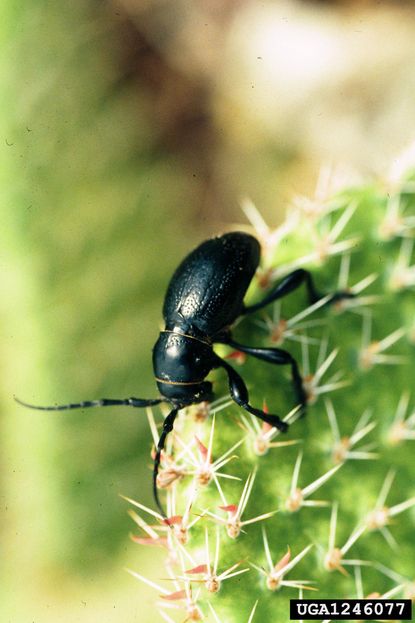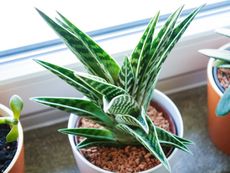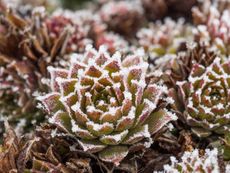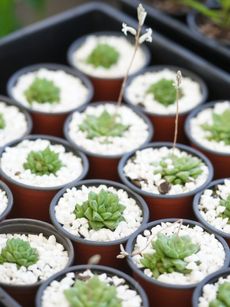What Is A Cactus Longhorn Beetle – Learn About Longhorn Beetles On Cactus


The desert is alive with numerous varieties of life. One of the most fascinating is the cactus longhorn beetle. What is a cactus longhorn beetle? These beautiful insects have rather scary-looking mandibles and long, sleek antennae. Longhorn beetles on cactus won't eat the plant, but their young can cause some damage. Cactus longhorn beetles live in the southwestern United States, especially in the Sonoran Desert.
What is a Cactus Longhorn Beetle?
Cactus devotees and managers of cactus gardens may shudder when they see the cactus longhorn beetle. Do cactus longhorn beetles hurt cacti? The adult is not the destroyer of the plants, but rather its progeny. The insect's favorite plants are those that are not densely spined but also haunt Cholla and Prickly Pears. If you see holes in the plant filled with a black substance, you may well have longhorn larvae inside your cactus. The cactus longhorn beetle has a hunched stance and elongated, almost horsy head. At an inch (2.5 cm.) long or more, with shiny, black fused wings and huge antennae, cactus longhorn beetles look like they can do some damage, and they do, but not as much as their larvae. The feeding activity of the juveniles can severely damage even large cacti, which will soften in spots and eventually collapse in on themselves as tissues are consumed. Fortunately, the insect has plenty of natural predators and is rarely an issue of high concern. In rare or valuable cactus specimens, a regimen of vigilance and control of cactus longhorn beetles is necessary to protect the plants. You can spot longhorn beetles on cacti in summer, in the early morning, and at sunset.
Cactus Longhorn Beetle Info
The female lays individual eggs which hatch into brown-headed larvae. These burrow into the cactus, secreting a green substance into the hole which hardens to a blackened tone, securing their entry. Larvae will feed on the roots and interior tissues of the cactus. They overwinter inside and emerge in spring as adults. During the day, adults hide in the sand to keep cool. Their primary objective is to mate before they die and feed infrequently but usually on tender new growth. Occasionally, adults will feed on new shoots and plants such as Portulaca. Once you see longhorn beetles on cactus, it's time to grab a flashlight and get to work. Grab the family and mete out some old-fashioned control of cactus longhorn beetles. While adult feeding is unlikely to destroy a plant because they feed little and live a very short life, the young who hatch and overwinter in the plant have months to liquefy the interior of a cactus. This means catching the adults before they can hatch another generation of cactus predators. Adults are easy to spot when the sun is going down or just coming up. You can easily pick them off and destroy them in whatever way your karma will allow. If that means driving them out to the desert, away from your plants, by all means, do that. Most people just close their eyes and step on them.
Gardening tips, videos, info and more delivered right to your inbox!
Sign up for the Gardening Know How newsletter today and receive a free download of our most popular eBook "How to Grow Delicious Tomatoes."

Bonnie Grant is a professional landscaper with a Certification in Urban Gardening. She has been gardening and writing for 15 years. A former professional chef, she has a passion for edible landscaping.
-
 10 Best Apartment Plants To Turn Your Small Space Into An Oasis
10 Best Apartment Plants To Turn Your Small Space Into An OasisThe best apartment plants can lend an ambience of the tropics, brighten up a space, or add a touch of drama, and turn an apartment into a relaxing oasis.
By Amy Grant
-
 Grow a Bathroom Oasis: 8 Best Bathroom Plants With No Light or Low Light
Grow a Bathroom Oasis: 8 Best Bathroom Plants With No Light or Low LightSome apartment dwellers grow the best bathroom plants with no light or low light. Read how one of our favorite plant lovers does it in the big city.
By Teo Spengler
-
 Variegated Succulents To Add To Your Plant Collection
Variegated Succulents To Add To Your Plant CollectionRead about some of the pretty variegated species that add beauty and interest to your succulent collection.
By Becca Badgett
-
 How To Protect Succulents And Cacti From Rain
How To Protect Succulents And Cacti From RainRain has the potential to cause damage to our cacti and succulents. However, when planted in proper soil, rainfall may perform as just a deep watering. Read on for more.
By Becca Badgett
-
 Succulents and Frost: How To Save A Succulent From Frost Or Freeze
Succulents and Frost: How To Save A Succulent From Frost Or FreezeCan succulents withstand cold? Succulents and frost don't traditionally go together and can result in damage, but you may be able to save frozen succulents.
By Bonnie L. Grant
-
 Pink Succulents Varieties To Try: How To Grow Perfect Pink Succulent Plants
Pink Succulents Varieties To Try: How To Grow Perfect Pink Succulent PlantsPink succulents may display the color on leaf edges or with streaks or blotches mingled throughout the foliage. Here are our favorites.
By Becca Badgett
-
 10 No Fuss Cacti - What’s The Best Low Maintenance Cactus
10 No Fuss Cacti - What’s The Best Low Maintenance CactusIf you’re thinking of adding plants to your collection, consider no fuss cacti. Click here for an easy cacti list, even for beginners.
By Becca Badgett
-
 5 Best Succulents For A Bathroom
5 Best Succulents For A BathroomSome succulents can be great options for bathroom decoration. Read on for our top five bathroom succulent ideas.
By Becca Badgett
-
 What Is A Succulent Starter Kit - Best Succulent Starter Kits
What Is A Succulent Starter Kit - Best Succulent Starter KitsWhile garden kits are not the most inexpensive option for growing succulents, they do include everything you’ll need. Grow succulents from seed by using a succulent seed starter kit to learn the process and to check your results.
By Becca Badgett
-
 Dazzling Succulents - Succulents With Striking Flowers
Dazzling Succulents - Succulents With Striking FlowersWhen you think of succulents you may just envision their unique leaves and stems. But succulents also produce bright and bold flowers in the right conditions. Read on to learn more.
By Bonnie L. Grant